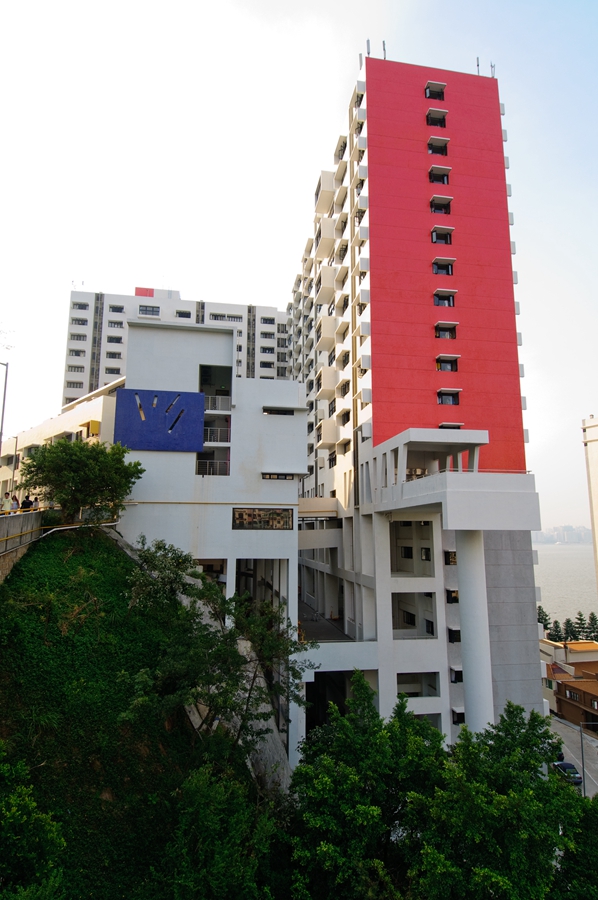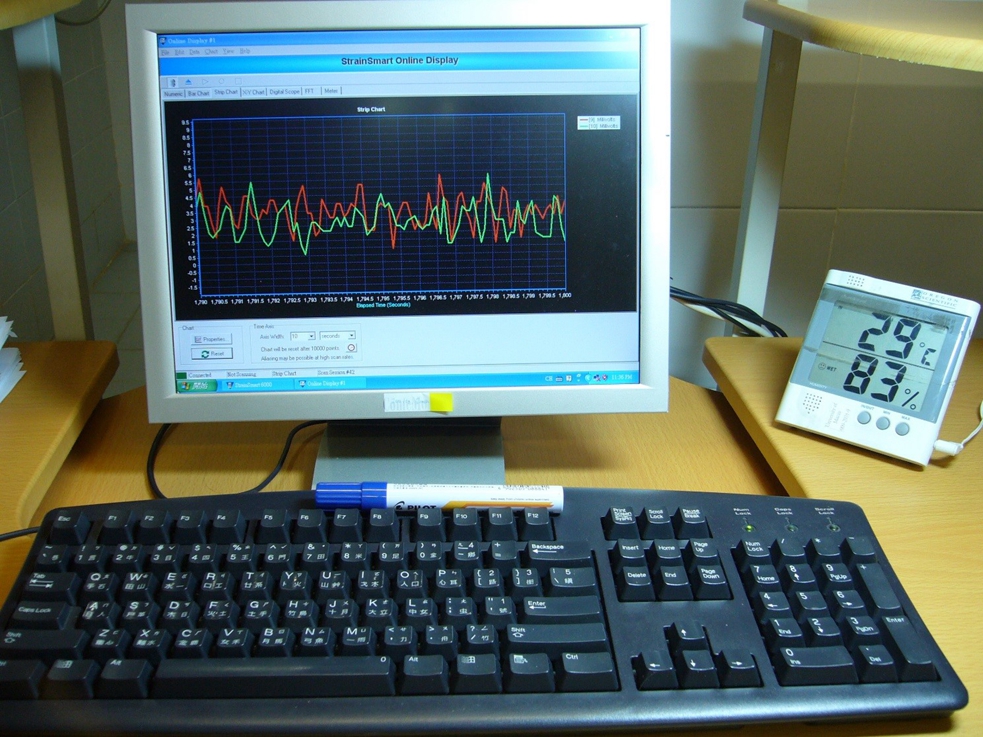Source: umagazine
Due to rapid economic and technological development, the scale of our infrastructure has increased dramatically. For example, skyscrapers can be almost one kilometre tall. Furthermore, newly-invented materials and structural member types complicate structural behaviour. Traditional types of human investigations are costly and they have various limitations. In particular, non-destructive testing methods for the determination of concrete compressive strength are popular, but they can be used to determine the concrete strength of a localised area only. For large-scale structures, it is difficult, if not prohibitive, to test all positions of the structure. More recently, other advanced technology allows the acquisition of the very tiny vibration response of structures. Such vibration is of the order of 10-5g or 10-6g, that is one of a million of the gravity acceleration. Nevertheless, the problem is very challenging because such response is very random.
Structural Health Monitoring
Structural health monitoring (SHM) is an automated strategy to
diagnose if a structure is in its healthy state, and it has attracted
tremendous interest in the last few decades. In particular, there have been
important advancements in the past decade due to rapid development in sensor technology
and data acquisition systems. There are four major goals in SHM: (1) to
indicate if there is any damage to a structure; (2) to determine the
location(s) of the damage(s); (3) to estimate the severity of the damage(s);
and (4) to evaluate the reliability of the entire structure due to possible
damages.
There are two major approaches
of SHM: static and dynamic. For static approaches, usually the strains of
different locations of a structure (especially bridge) will be measured and
they will be judged on whether or not they are unacceptably large compared with
the normal thermal expansion. However, a major problem of this approach is that
strains depend directly on the force or excitation exhibited to the structure.
Therefore, the values of strains may reflect only the change of loading
conditions instead of the health status of the structure. Furthermore, the
strain measurements are also localised quantities.
Dynamic Monitoring
For the dynamic approach, the idea is similar to pulse checking but substantially
more difficult. Instead of evaluating if the vibration magnitude of the
structure is too large, this approach attempts to investigate the
time-frequency content of the response. For instance, if one clicks a cup, a
specific c sound frequency will be generated and this frequency is insensitive
to how hard the cup was hit. However, if the cup is cracked, the sound
frequency will change. In particular, the location, and the length and depth of
the crack, will result in different change of such frequency. Nevertheless, the
problem in structural health monitoring is far more complicated because the
dynamic loadings (ground motion, wind loads, sea wave, traffic induced loads,
and so on) are random and usually cannot be measured. Furthermore, the scale of
civil engineering structures is huge, especially for those necessary for the
structural health monitoring scheme.
In the dynamic structural health monitoring system, sensors (usually
accelerometers) are mounted at different locations on the underlying structure.
Since the important frequency band of typical structures is from 0.1 Hz to 20
Hz, the sampling frequency will have to be 100 Hz or above in order to have
sufficient description of the response, ie to measure 100 times or more within
one second at each location.
Another difficulty lies with the large number of unknown parameters to be
identified, since there are numerous components in civil engineering structures
(such as, say, a bridge). We know that we need to have at least the same number
of equations to solve the unknowns. In our problem of structural health
monitoring, such equations are obtained from sensors located on the structures.
In this case, we may need a huge number of sensors but this induces both cost
and computational burdens.
Real-time Structural Identification
On 23 October 2015, a ship struck the Kap Shui Mun Bridge in Hong Kong. The
bridge was closed for about 1.5 hours. Since it is a critical line to the Chap
Lap Kok Airport, the economic loss of this incident was huge. Therefore, if a
structural identification can work in a real-time fashion, it can help identify
whether or not the structure is safe almost immediately, instead of closing the
bridge and conducting an investigation by engineers, or by other offline
structural identification calculation. is will be very useful from the point
of both safety and economic concerns. However, real-time structural identification
is a very challenging problem. First, the scale of civil engineering structures
is huge so one can expect a very complicated finite element model is necessary.
Second, since the sampling frequency is usually hundreds Hz, it is straightforward
to imagine the difficulty in updating a huge structural model several hundred
times every second.
Model Class Selection
One important problem is to select a proper class of models for the purpose
of structural health monitoring. This sounds to be a simple problem but it is
indeed much more difficult than it looks at first glance. For instance, let’s
consider a simple problem for the sake of explanation. Imagine a student,
called student A, who takes a physics class and learns F=ma. In the laboratory
section, he conducts experiments and obtains 10 data points. Then, he uses
EXCEL to fit a line to obtain the constant ‘m’ to determine whether or not it
matches with the mass. Unfortunately, student B does not attend the lecture,
and therefore when he conducts the experiments he does not know the formula
F=ma. He then uses EXCEL to fit a parabola, ie, second order polynomial. It turns
out that his data fitting is better than student A because a parabola offers
more flexibility to t the data better. Then, student C does the same but with a
ninth-order polynomial. Guess what? She got zero error because this polynomial,
with ten adjustable coefficients, can go through all ten points exactly.
However, a ninth-order polynomial is very bumpy and it is by no means a good
model for prediction in this case. What can we learn from this story? We cannot
select a class of models solely due to the fitting errors. In general, a class
of models with too many adjustable parameters has great power in fitting the
details of the data, including the noise, but this will lead to the so-called
over-fitting behaviour. Such models are not reliable for future prediction.
Beck and Yuen (2004) presented the first paper to tackle the model class
selection problem in the area of structural health monitoring. This is problem is
particularly difficult in this field due to the large number of unknowns, the
unavailability of the excitation measurements, and a high level of uncertainty
in civil engineering structures. In this paper, model complexity was quantified
and the model class candidates are ranked according to the tradeoff between the
model fitting power and its complexity, which is a measure of the model
robustness. Model robustness is a very crucial indicator of the performance of
a model class because it represents how fragile a model class is in resisting
modelling errors and other uncertainties. This paper received tremendous
attention, even from researchers in other areas such as chemistry, physics,
electrical engineering, education measurements, medical science, and materials
science. It was ultimately listed as one of the top ten cited papers among
several thousand papers published in the long history of the Journal of
Engineering Mechanics of the American Society of Civil Engineers.
Recently, we extended this work to consider a more challenging problem to
select the model class in the real-time manner (Yuen and Mu, 2015). The problem
is difficult because the data acquisition time interval is usually 1/200 or
1/500 second. In other words, we have to finish model class selection and
parametric identification 200 or 500 times per second. This paper proposed an
important foundation to build reliable real-time structural health monitoring
systems. Due to its importance, it was published in the Computer-aided Civil
and Infrastructure Engineering journal, which is ranked the top among 126
SCI/SCIE indexed civil engineering journals. More importantly, it was the
second most cited paper among the over 120 papers published in the same period.
Monitoring of the East Asia Hall on the
Old Campus
On the old UM campus, we monitored the East Asia Hall round the clock for
about five years. We investigated how environmental conditions (temperature and
humidity) affect the long-term structural behaviour (Yuen and Kuok, 2010).
Furthermore, we also studied the extreme behaviour under a number of severe
typhoons. We participated in the National Challenge Cup in 2009 and won the
first-class award, which was the first time this award was won by scholars in
Macao. We were also invited to conduct an investigation of the Ting Kau Bridge
(Kuok and Yuen, 2016).



